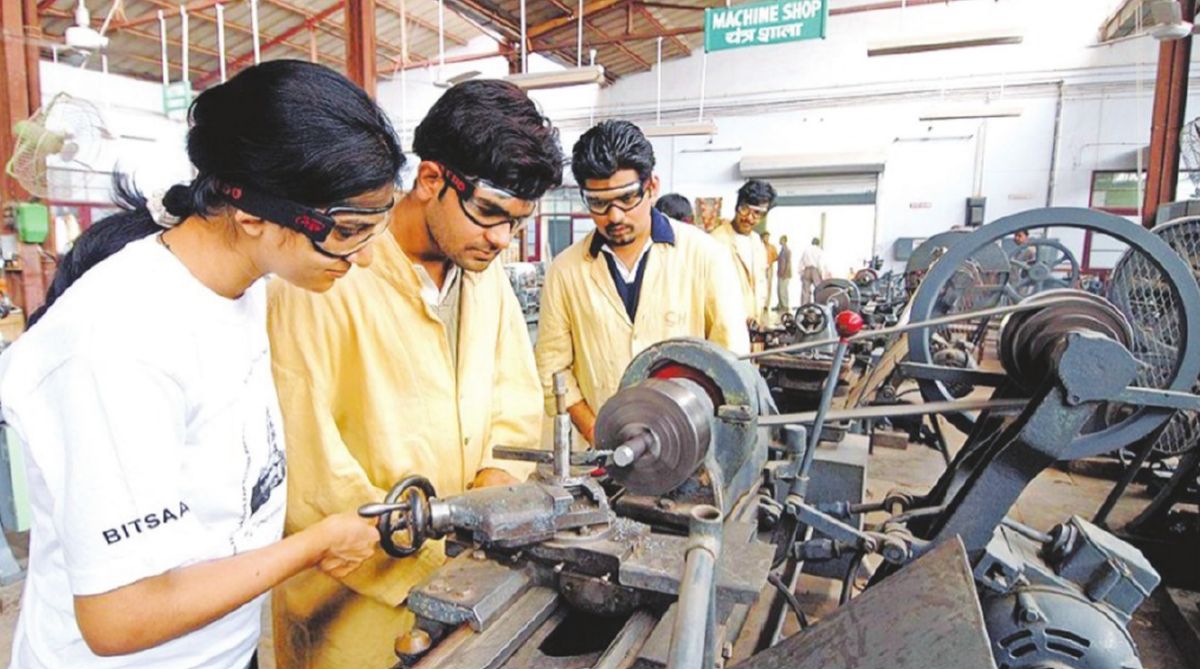This year, as many as 10.5 lakh students appeared for the IIT JEE entrance exam. These students are relying on an engineering degree to give their career the much needed leap, believing that this is the key to success. However, the state of engineering education in India is far from that.
The lack of employable skills in engineers in the country has been a rising concern over the past decade. In a recent report by Aspiring Minds, the organisation compiling the National Employability Report every year, stated that as many as 95 per cent of 36,000 engineers assessed in IT related branches were considered unemployable for software development jobs. Last year, the shutting down of over 150 engineering colleges by the All India Council for Technical Education due to lack of basic technical knowledge among the students also raised a number of questions on the gravity of the situation.
Advertisement
Reasons behind engineering education tumbling down in India: One of the most important reasons has been the lack of integrity and interest on the part of the institutions to impart quality education. The era after the IT boom in India, in the early 2000s, saw an exponential increase in the demand for engineering education and colleges mushroomed all around.
Most of these institutions were only interested in encashing on this demand and relied heavily on bulk placements by the upcoming IT firms. This led to a decade of engineering students who had the degree but no skills to be able to apply their learning.
The other aspect that has left our engineers behind is the irrelevance of the curriculum. Work and workplaces are undergoing a tectonic change. This is due to fundamental changes in technology as well as economics — places of production, purchase and consumption have transformed.
The second era of engineering is coming to an end with the rapid technological advancements in areas like automation, robotics, data sciences, artificial intelligence and machine learning. The speed of change in last three to four years has probably surpassed most expectations.
As a result, most institutions have been unable to keep pace and the poor quality of the curriculum and the infrastructure has directly impacted the knowledge and the skills of the graduates.
The fact that only 1.4 per cent of the engineers could write functionally correct and efficient code, as revealed in a recent report, raises questions around how prepared we are for the era of automation ahead of us.
The lack of job opportunities in core domains other than computer science and IT has also led to a mismatch of skill versus the requirements. In order to place their students, institutions often push them from all domains to appear for opportunities in the software industry.
Before the giant IT companies in India began selectively hiring and slashing out their hiring percentages very recently, it was usual to find a mechanical engineer taking up a job in an IT company.
The often less emphasised reason for this crisis is also the lack of genuine interest in the domain among many students enrolling in engineering programmes.
A number of students every year decide to study engineering either under the pressure of family, society or because they believe that this will be an easy way towards bagging a job. This is why a large number of engineers are not only unhappy with their jobs but also incapable to develop skills that are relevant to the times.
Other options have opened up: As the country’s most coveted profession began to suffer, other non-engineering disciplines have emerged in quality and offering ample opportunities. Disciplines like design and law have gained popularity in the past few years and students are now beginning to explore outside engineering.
In addition to this, foreign education has come to the reach of many. US universities registered a 12 per cent increase in Indian students in 2017 and according to the World Education News + Reviews research, India is the second sender of students.
What can be done: It is important to understand that in spite of the situation, it is an exciting time to be an engineer. If one can respond to the changes and upskill to be ready for the future world of work and business, engineers are the problem solvers of tomorrow.
Many renowned foreign institutions have responded to the unprecedented changes by retooling, reskilling, reprogramming, creating new learning paths, offering unbundled learning and providing a multidisciplinary perspective to the subject.
In India, we have to buckle up and provide students practical, application based education, where they truly learn to experiment, solve problems and apply their education.
Technology will evolve faster than curriculum can catch up but what we can teach them is how to become lifelong learners and prepare for a career, a life and not simply a job. We need to teach them to unlearn and relearn, to break down any problem and think of creative technological solutions, beyond the machine.
Experiential and hands-on learning, with a cutting edge and evolving curriculum could be just the key to solve the problem of unemployability. Institutions also need to train engineers on essential communication, critical thinking, decision making and collaboration skills that are transferrable, no matter the jobs they switch.
We need to begin the process of developing engineers that really see the world around them, respond to it and innovate. Engineering colleges around the nation must start working towards creating future ready professionals, before they fail their students and themselves.
The writer is pro vice-chancellor, JK Lakshmipat University, Jaipur











